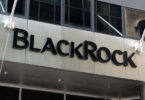Today the Basel Committee on Banking Supervision (BCBS) launched a consultation on proposed changes to crypto-assets rules for bank capital requirements. Tokenized securities and stablecoins issued on permissionless blockchains will be classed as high risk alongside other cryptocurrencies. It also tightened the rules on stablecoin reserve assets.
Regarding permissionless blockchains, after a review the Committee concluded permissionless blockchains involve a reliance on third parties. The problem is that banks are unable to fully carry out due diligence or oversight. Hence it concludes that crypto-assets on permissionless blockchains should not be classified as Group 1. This group applies more or less conventional capital requirements.
In contrast, Group 2 which includes all cryptocurrencies, is considered high risk. It requires banks to set aside at least a dollar of capital for every dollar of crypto-assets held.
The wording was quite specific that this permissionless rule applies to all Group 1 assets. Group 1a applies to tokenized conventional assets and securities and Group 1b is qualifying stablecoins. Securities and stablecoins that don’t qualify for Group 1 are treated as high risk Group 2 assets.
Stablecoin reserves
Additional requirements on stablecoin reserves more or less restrict them to bank balances, short dated government securities and highly quality bank securities.
The more compliant stablecoins such as Paxos and USDC also use repo and reverse repo. That’s a topic the Basel Committee plans to review. In other words, where stablecoins use repo or reverse repo, they will consider under what circumstances they will be treated as qualifying for the lower risk Group 1b. That’s all moot anyway because these public blockchain stablecoins are considered Group 2.
The Committee’s repo concerns include altering the quality of securities through swaps and the potential inability to meet redemptions in a timely fashion.
Stablecoin issuers should disclose the value of the reserve assets daily and the composition weekly. Surprisingly, the audit and verification requirements are lower than the high profile stablecoins currently carry out. It suggests an audit at least annually and a verification twice a year.
The consultation runs until March 28 next year. We suspect the stablecoin proposal might get some pushback.






